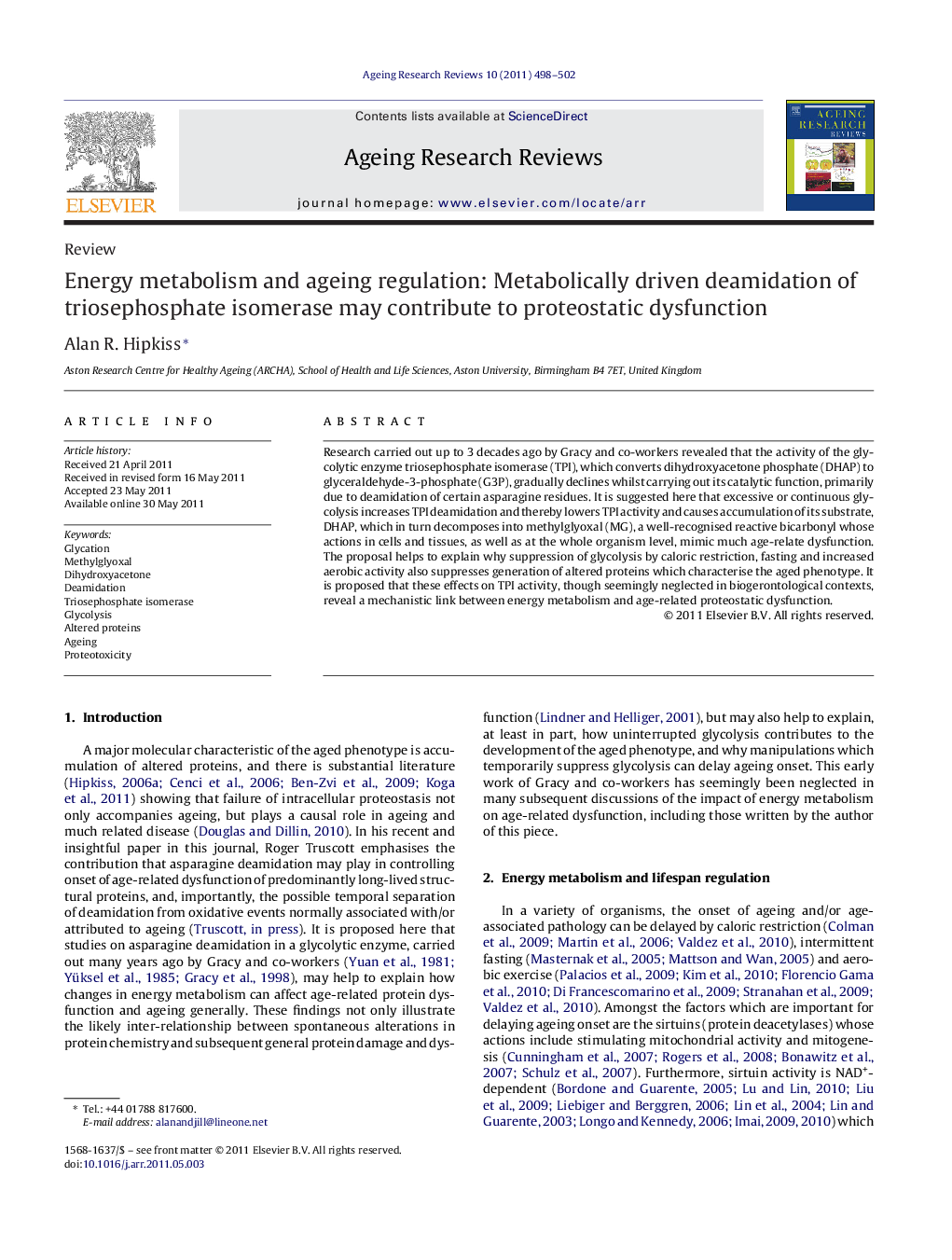| Article ID | Journal | Published Year | Pages | File Type |
|---|---|---|---|---|
| 1902297 | Ageing Research Reviews | 2011 | 5 Pages |
Research carried out up to 3 decades ago by Gracy and co-workers revealed that the activity of the glycolytic enzyme triosephosphate isomerase (TPI), which converts dihydroxyacetone phosphate (DHAP) to glyceraldehyde-3-phosphate (G3P), gradually declines whilst carrying out its catalytic function, primarily due to deamidation of certain asparagine residues. It is suggested here that excessive or continuous glycolysis increases TPI deamidation and thereby lowers TPI activity and causes accumulation of its substrate, DHAP, which in turn decomposes into methylglyoxal (MG), a well-recognised reactive bicarbonyl whose actions in cells and tissues, as well as at the whole organism level, mimic much age-relate dysfunction. The proposal helps to explain why suppression of glycolysis by caloric restriction, fasting and increased aerobic activity also suppresses generation of altered proteins which characterise the aged phenotype. It is proposed that these effects on TPI activity, though seemingly neglected in biogerontological contexts, reveal a mechanistic link between energy metabolism and age-related proteostatic dysfunction.
► Dihydroxyacetone (DHAP) provokes asparagine deamidation of triosephosphate isomerase (TPI). ► TPI activity declines due to proteolysis deamidated of TPI monomers. ► DHAP accumulates and decomposes into methylglyoxal (MG). ► MG damages proteins, lipids and nucleic acids, induces ROS generation and mitochondrial and proteasomal dysfunction. ► Proposal may explain the deleterious effects of excess glycolysis and why suppression of glycolysis suppresses formation of altered proteins associated with ageing.
